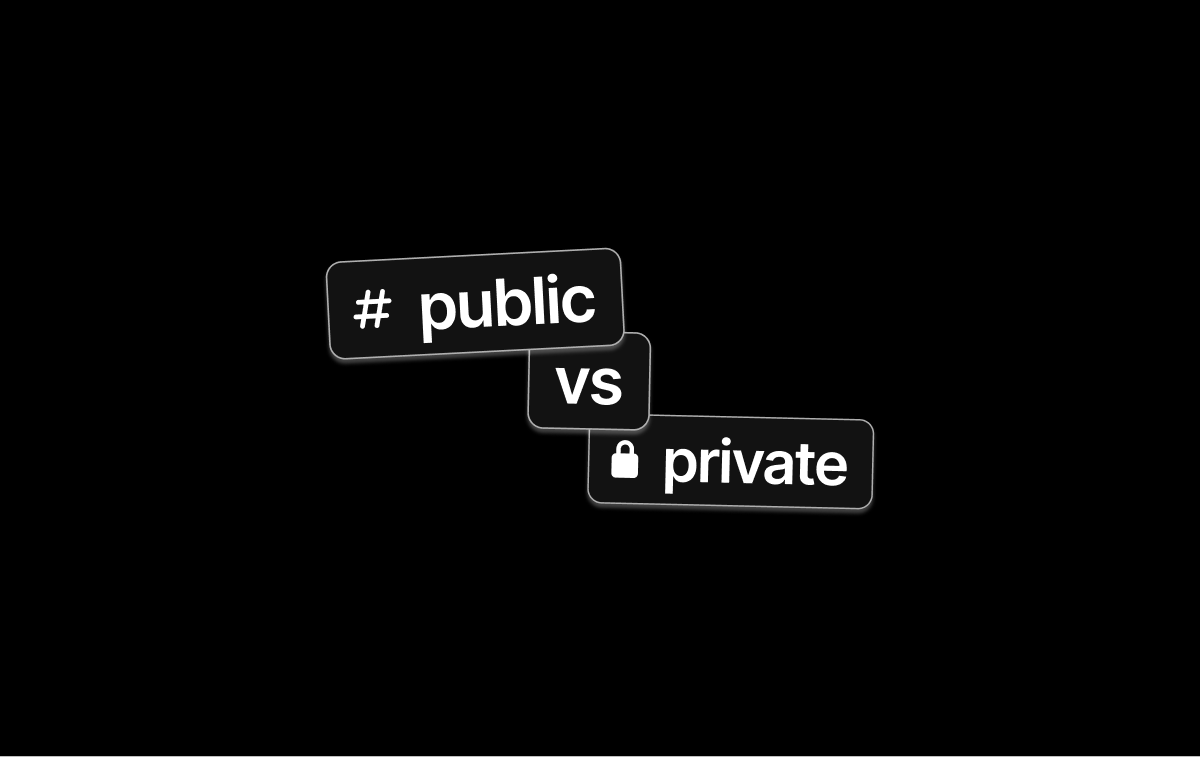

#ask-it?Or should they send a direct message to someone they know can help? The answer depends on the situation and how your team prefers to work.
This guide breaks down the pros and cons of each approach and shows how Ravenna makes it easier to support both.
📢 Public channels: Default to transparency
Public Slack channels are often the first place for internal support. Examples include:#ask-it#help-people#feedback-product#support-eng
✅ Benefits
✅ Benefits
-
Shared context
Everyone can see the question and answer, which cuts down on repeat asks. -
Team visibility
Workload is visible, helping balance support and avoid hidden bottlenecks. -
Self-service knowledge
Teammates can search Slack and find past answers. -
Fewer interruptions
Responders can reply when they’re ready instead of being pinged directly.
⚠️ Tradeoffs
⚠️ Tradeoffs
-
Perceived friction
Some may hesitate to post what they see as “basic” questions in public. -
Noise
A busy channel can feel overwhelming without structure. -
Unclear ownership
Without triage, messages can slip through the cracks.
🔒 Private DMs: Feels personal, stays organized
Private requests in Ravenna don’t go to an agent’s personal DMs.Instead, teammates message the Ravenna bot. To the requester, it feels like a one-on-one conversation. For agents, it keeps personal inboxes clear and ensures all requests flow into the right workspace channel.
✅ Benefits
✅ Benefits
-
Low barrier to entry
Messaging the bot feels just as simple as DM’ing a person. -
Feels safe
Great for sensitive or awkward issues like HR, hardware, or access. -
Agent focus
Agents aren’t interrupted in their own DMs—all requests appear in triage channels or the channel. -
Organized flow
Even private conversations stay trackable in the same system as public ones.
⚠️ Tradeoffs
⚠️ Tradeoffs
-
Less visibility
The request isn’t visible to the wider team unless surfaced. -
Easy to overlook
Without clear processes, private messages can still be missed. -
Perception of one-to-one
Some teammates may assume a DM guarantees instant attention.
🧠 Ravenna supports both
Ravenna gives you the advantages of each model without forcing your team to pick one.In public channels
- ✅ Turn any message into a request with a shortcut or emoji
- 🧵 Ravenna creates a thread and tracks it as a structured request
- 👥 Multiple responders can collaborate without cluttering the channel
- 📥 Requesters get automatic updates as progress is made
In private DMs
- 💬 Requests can be submitted directly to the Ravenna bot
- 🔐 Sensitive issues stay private but are still tracked in the workspace
- 🧭 Agents manage all requests from one Workspace, whether they start in a channel or a DM
Ravenna adapts to how your team already works and makes support smoother across both public and private conversations.

